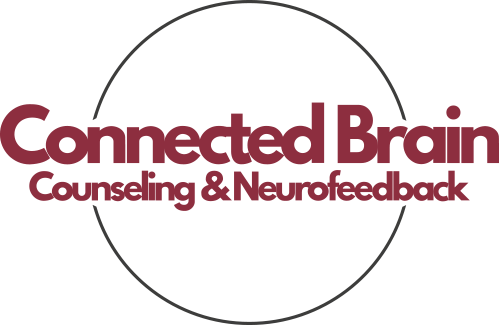Defining Contempt in Relationships
Contempt is often referred to as the most harmful of the Four Horsemen of the Apocalypse—a term coined by renowned relationship expert John Gottman. The Four Horsemen, which also include criticism, defensiveness, and stonewalling, represent behaviors that predict relationship breakdowns. Among them, contempt is considered the most dangerous, as it conveys a sense of superiority and disgust that makes the recipient feel inferior and worthless.
Contempt can take various forms in a relationship, including:
- Sarcasm and Mockery
Sarcasm and mockery are common expressions of contempt. These involve using biting or cutting remarks to mock a partner’s actions, ideas, or personality. For example, one partner might sarcastically say, “Oh, sure, you’re always so reliable,” when they don’t actually believe it. - Eye Rolling
Non-verbal gestures like eye-rolling, sighing, or sneering are strong indicators of contempt. These subtle actions signal disrespect and frustration, suggesting that one partner doesn’t take the other seriously. - Ridiculing or Belittling
Making jokes at the other person’s expense, especially in front of others, is another sign of contempt. This behavior is meant to diminish the partner’s worth, making them feel small or inadequate. - Name-Calling or Insults
Using derogatory terms, insults, or harsh language to attack the other person’s character is a direct expression of contempt. This can range from calling someone “stupid” to making demeaning remarks about their intelligence, appearance, or abilities. - Dismissing or Minimizing
Contempt may involve dismissing or minimizing the other person’s feelings or concerns. For instance, one partner might say, “You’re overreacting, it’s not that big of a deal,” in response to their partner expressing frustration or hurt.
The Impact of Contempt on Relationships
Contempt can have serious consequences for both the individuals involved and the overall health of the relationship. Over time, it can destroy the emotional bond that keeps couples connected, leading to increased resentment, emotional distance, and even the eventual dissolution of the relationship.
Here are some of the key effects of contempt:
- Erosion of Trust
When one partner constantly communicates disdain and disrespect, trust is eroded. The partner on the receiving end may feel unsafe or insecure in the relationship, uncertain of when they will be belittled or criticized again. - Emotional Distance
Contempt creates emotional distance between partners, making it difficult for them to feel close or connected. This distance can result in feelings of loneliness, frustration, and sadness, even if the couple is physically together. - Low Self-Esteem
Being subjected to contempt can severely damage a person’s self-esteem. The constant belittling, mocking, and criticism can lead to feelings of worthlessness and inadequacy, which may affect the person’s self-image beyond the relationship. - Increased Conflict
Contempt often escalates conflict rather than resolving it. Instead of addressing issues constructively, it fuels hostility, leading to more frequent and intense arguments. - Risk of Breakup or Divorce
Studies have shown that contempt is one of the strongest predictors of relationship breakdowns, including divorce. If left unchecked, it can lead to the complete deterioration of the relationship.
Why Does Contempt Arise in Relationships?
Contempt often stems from unresolved conflict, frustration, or feelings of superiority. Here are some common reasons why contempt might develop in a relationship:
- Unresolved Resentment
When issues aren’t addressed or resolved, resentment can build over time. This resentment may eventually manifest as contempt, with one partner feeling bitter toward the other. - Power Imbalance
In relationships where one partner feels more powerful or competent than the other, contempt may arise as a way to maintain that power dynamic. The more powerful partner may look down on the other and use contempt to assert their superiority. - Lack of Respect
Contempt often reflects a deep lack of respect for the other person. When one partner no longer values or respects their partner’s opinions, feelings, or contributions, contempt can easily emerge. - Cultural or Familial Patterns
Contempt can be learned behavior from past relationships or family dynamics. If a person grew up in an environment where contempt was used as a communication tool, they may be more likely to adopt these behaviors in their own relationships.
 Breaking the Cycle of Contempt
Breaking the Cycle of Contempt
Breaking the cycle of contempt requires a conscious effort from both partners to address the underlying issues and foster mutual respect and understanding. Here are some steps couples can take to reduce contempt and improve their relationship:
- Open Communication
Healthy communication is key to overcoming contempt. Both partners should feel comfortable expressing their feelings and concerns in a respectful manner, without resorting to insults, sarcasm, or other contemptuous behaviors. - Foster Appreciation
One of the most effective ways to combat contempt is by fostering a culture of appreciation and gratitude. Instead of focusing on each other’s flaws, partners should make an effort to acknowledge and express appreciation for each other’s positive qualities and contributions. - Address Underlying Issues
Contempt often stems from unresolved conflict or resentment. It’s important for both partners to address the underlying issues causing contempt, whether through open discussions or seeking professional help. - Seek Couples Counseling
If contempt has become a pervasive issue in the relationship, couples counseling can provide a safe space to work through the underlying problems. A therapist can help both partners develop healthier communication patterns and rebuild respect and trust. - Practice Empathy
Developing empathy is key to breaking the cycle of contempt. When partners take the time to understand each other’s perspectives and emotions, they are less likely to resort to contemptuous behaviors.
Contempt is a toxic and harmful behavior that can quickly erode trust, respect, and emotional connection in a relationship. Recognizing the signs of contempt and addressing the underlying issues that contribute to it are essential steps in fostering a healthier, more respectful relationship.
- The Gottman Institute – Contempt: The Worst of the Four Horsemen
This article discusses contempt as one of the Four Horsemen of relationship breakdown and offers insights into its effects and how to overcome it. - Psychology Today – The Toxic Effect of Contempt in Relationships
Psychology Today explores the impact of contempt on relationships and provides strategies for addressing and reducing contemptuous behaviors. - Verywell Mind – Contempt in Relationships: What It Is and How to Address It
Verywell Mind explains the different forms of contempt and offers practical advice on how to repair relationships affected by this behavior.
If you’re struggling with contempt in your relationship, Connected Brain Counseling can provide guidance and support. Reach out to us today for a free consultation and take the first step toward healing.





